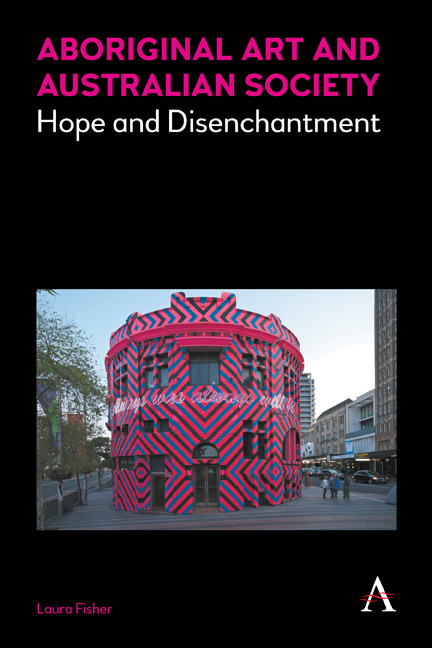Preface and Acknowledgements
Published online by Cambridge University Press: 22 July 2017
Summary
This book has taken shape over ten years, with the majority of the research undertaken between 2007 and 2012 when I completed my doctorate at the University of New South Wales. It seems a good idea to recall the atmosphere in which I began. At that time there was a sense of extraordinary momentum surrounding the Aboriginal art movement. The first National Indigenous Art Triennial, Culture Warriors, was staged at the National Gallery of Australia in 2007, and the gallery was preparing its expansive Indigenous art wing, which was launched in 2010. Significant exhibitions of John Mawurndjul (Basel, Switzerland and Hannover, Germany) in 2006, and Emily Kame Kngwarreye (Osaka and Tokyo, Japan) in 2008, and the varied architectural commissions for the Musée du quai Branly in Paris seemed to signal that Aboriginal artists were reaching audiences offshore in a way that few Australian artists had in the country's history. Both the primary and secondary market in Aboriginal art had become intensely competitive as Aboriginal art experienced a speculative boom befitting the years immediately prior to the global financial crisis. Many people were wondering whether Aboriginal artists themselves were benefiting from this boom.
This was surely a significant moment in Australian cultural history, and my aim when I began my PhD was to draw together the many threads of artistic and social change that had led to this moment. But more than this, I wanted to understand how Indigenous people's pursuit of justice in the settler state had shaped Aboriginal art's trajectory and inflected its meanings. This line of questioning remains at the heart of this book.
Despite the reworkings that have occurred in subsequent years, the book retains something of the outlook of my younger self, and is still in some ways moored to the climate of acceleration, expansion and controversy in which I was immersed. It focuses largely on the years between the election of Prime Minister Gough Whitlam and the global financial crisis. While it does touch on some events and debates of the very recent past, the present circumstances of Indigenous affairs, for example, are for the most part beyond its scope.
- Type
- Chapter
- Information
- Aboriginal Art and Australian SocietyHope and Disenchantment, pp. xi - xivPublisher: Anthem PressPrint publication year: 2016



